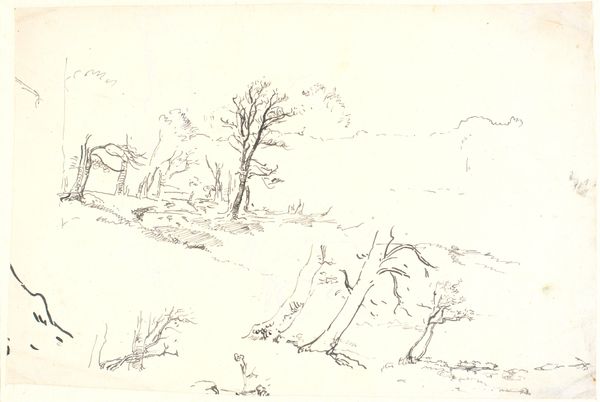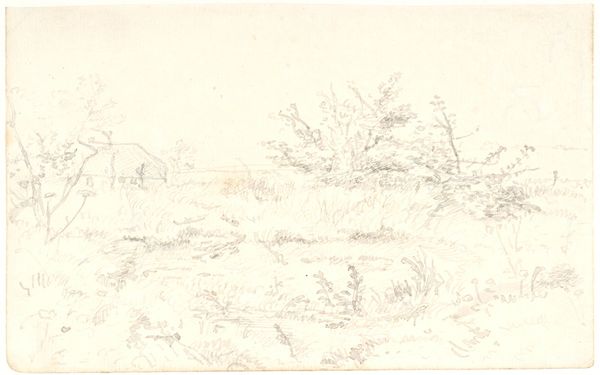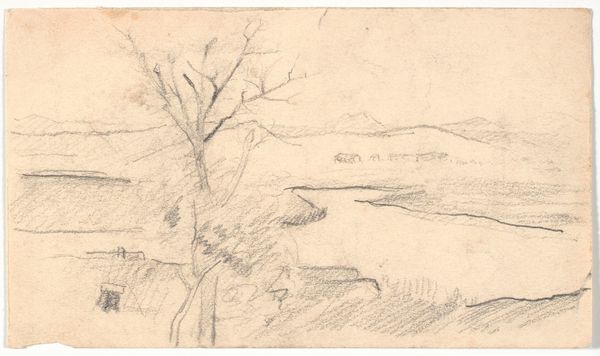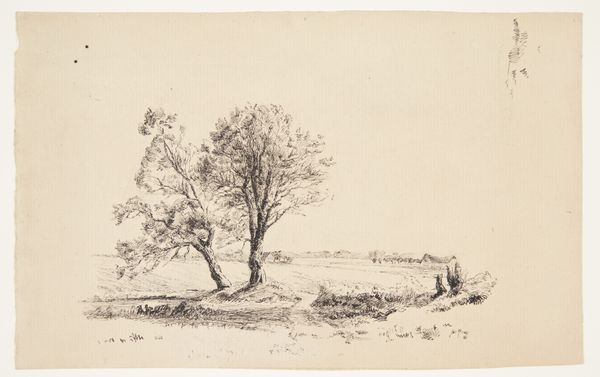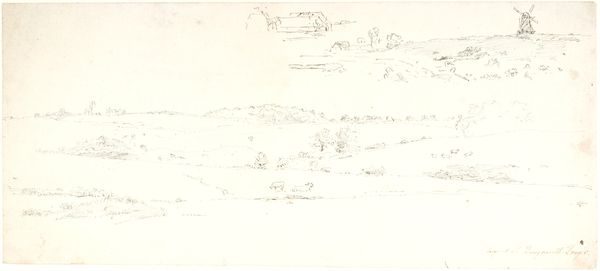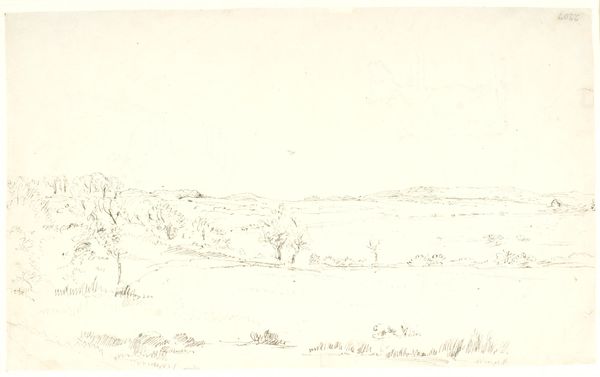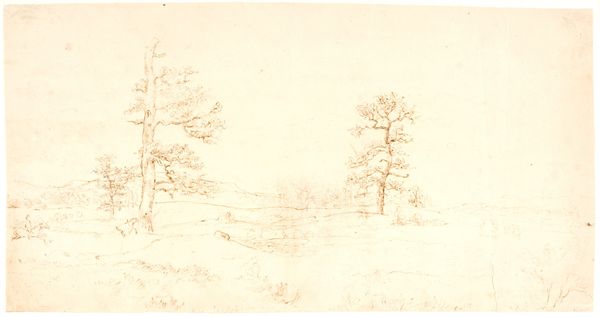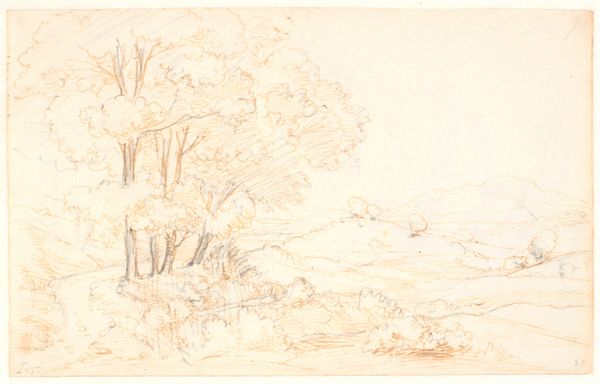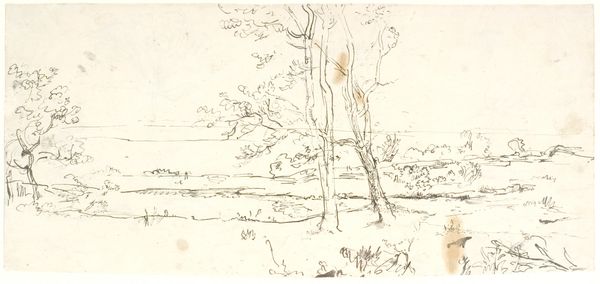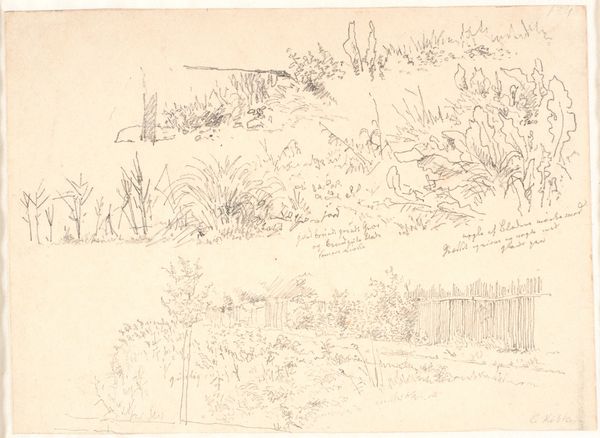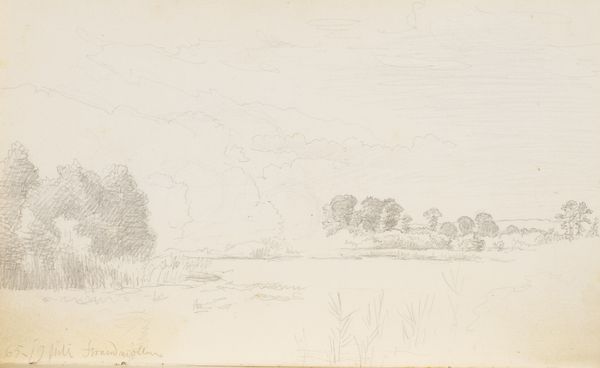
drawing, pencil
#
drawing
#
landscape
#
romanticism
#
pencil
#
northern-renaissance
Dimensions: 163 mm (height) x 348 mm (width) (bladmaal)
Curator: P.C. Skovgaard, a towering figure of Danish Golden Age painting, sketched this dreamy scene. It’s called "Fra Eremitagesletten i Dyrehaven," and dates back to 1847. Skovgaard rendered this with a humble pencil. Editor: It’s so spare, isn't it? Like a half-remembered daydream. Those barely-there trees in the background feel so... transient. Curator: Exactly! This isn't a finished painting, but a study. Note the delicate cross-hatching. This highlights how the pencil allows Skovgaard to investigate the subtle tonal shifts within the landscape itself. We can see his focus on observation, marking textures. The paper itself is very likely handmade, and chosen specifically for its receptivity to the graphite. Editor: The simplicity makes it powerful, almost stark. You can sense the cool, crisp air and feel the space. He really captures a sense of Scandinavian light with so few lines. I am intrigued about his artistic process to go from a loose sketch such as this to one of his painted landscapes! Curator: That's perceptive. Many considered Skovgaard a national romanticist, interested in an authentically Danish landscape rooted in its cultural moment. Dyrehaven was, and remains, a public space, thus accessible to ordinary people; Skovgaard brings both an idealised romantic and pragmatic working eye to this image. We need to keep in mind his use of pencil; as graphite became increasingly available as an industrial material. It allowed for artists like Skovgaard to explore their own landscape with ease! Editor: I also feel the melancholy, a slight sense of something passing… is this is typical of Romanticism? I just sense transience here. Curator: Definitely. But this feeling is partly facilitated through Skovgaard’s working methodology – of using accessible, reproductive material. Here he can rapidly observe, make studies. Which offers access into both artist vision, alongside a glimpse into industrial advancements. Editor: Well, I’ll never look at a humble pencil drawing the same way again. It speaks volumes about place and time, now I know what to listen out for! Curator: Indeed. From an economical industrial item, and working process to capture romantic transience – there’s much revealed within Skovgaard's working practice here.
Comments
No comments
Be the first to comment and join the conversation on the ultimate creative platform.

